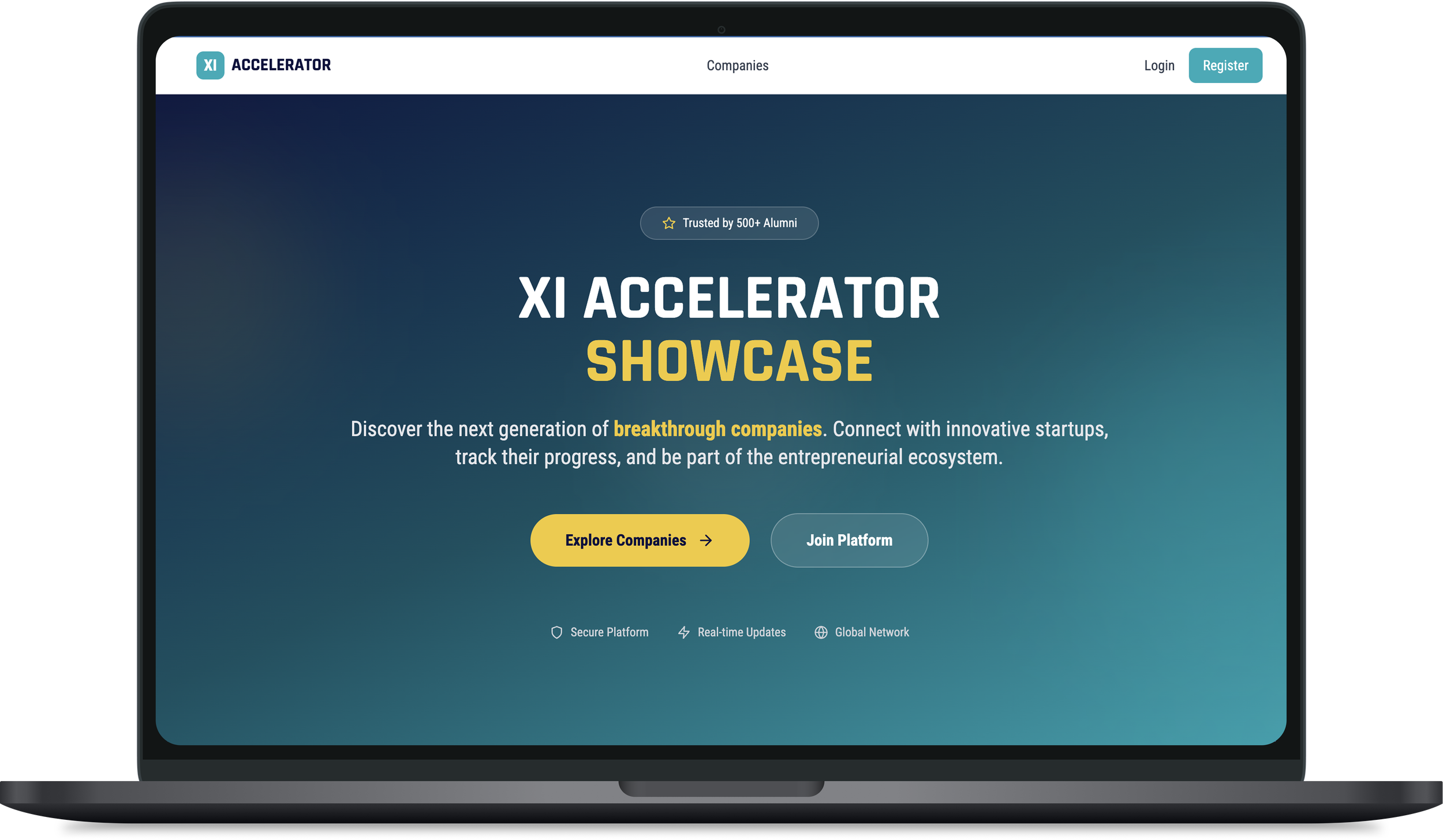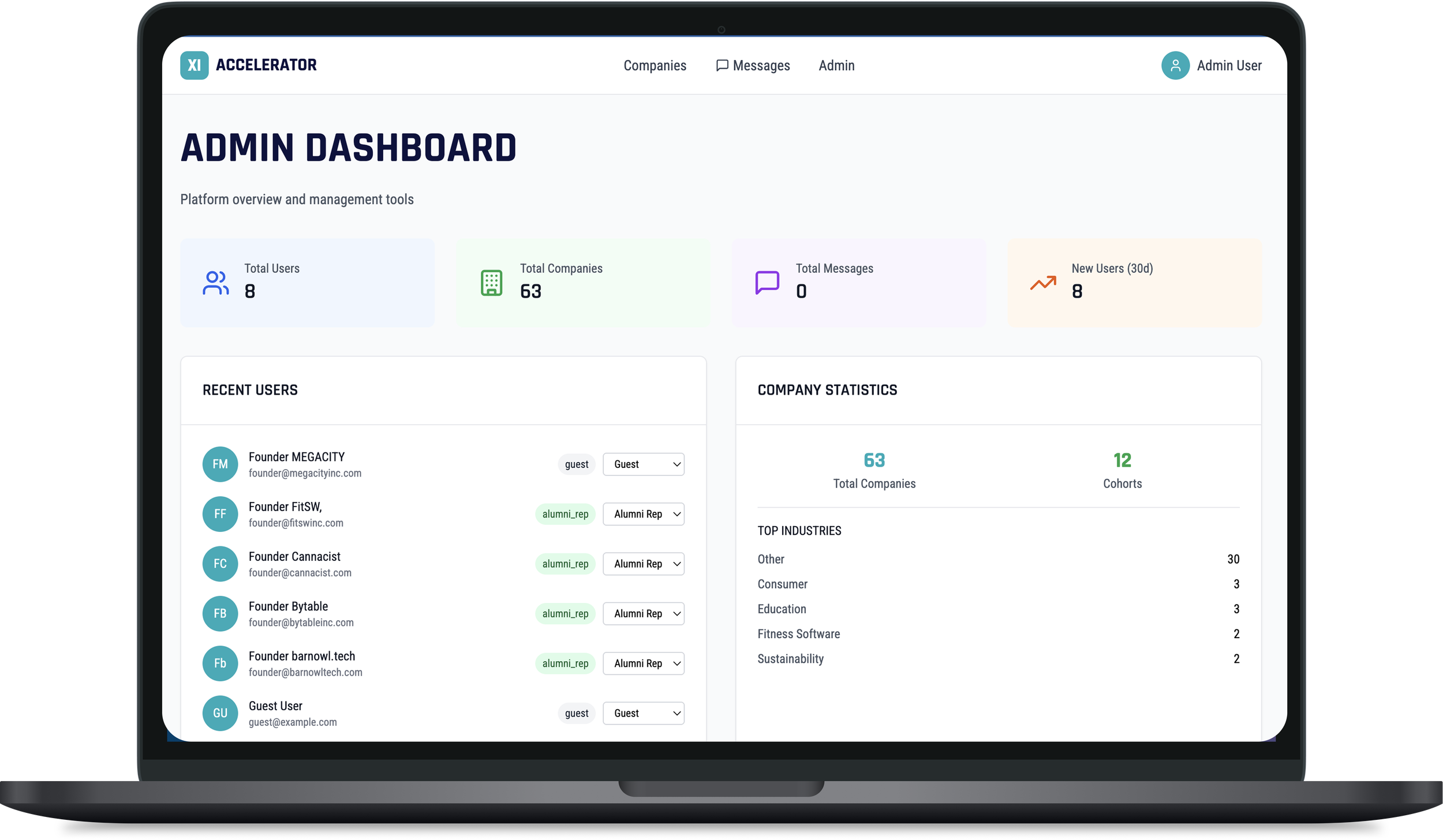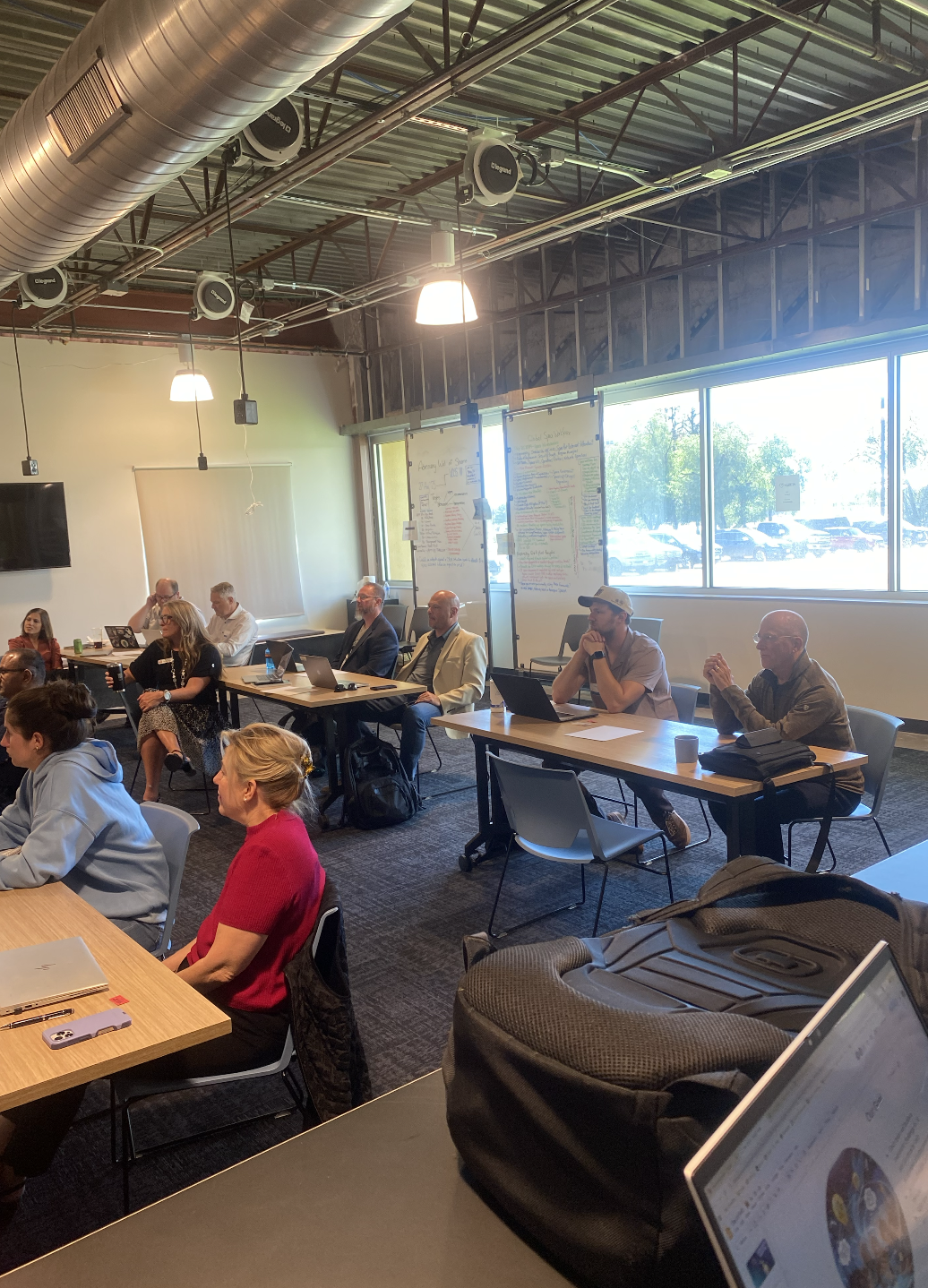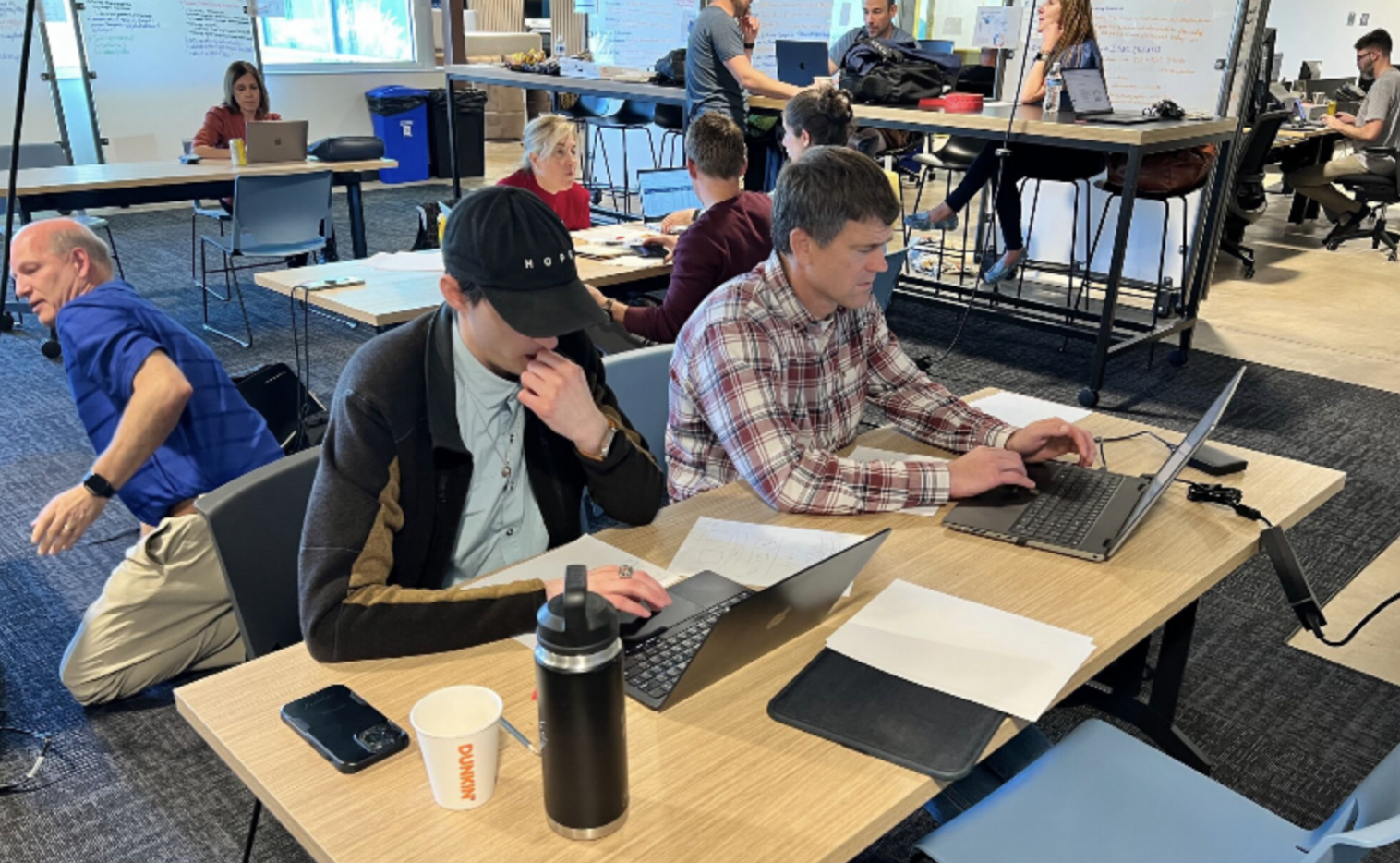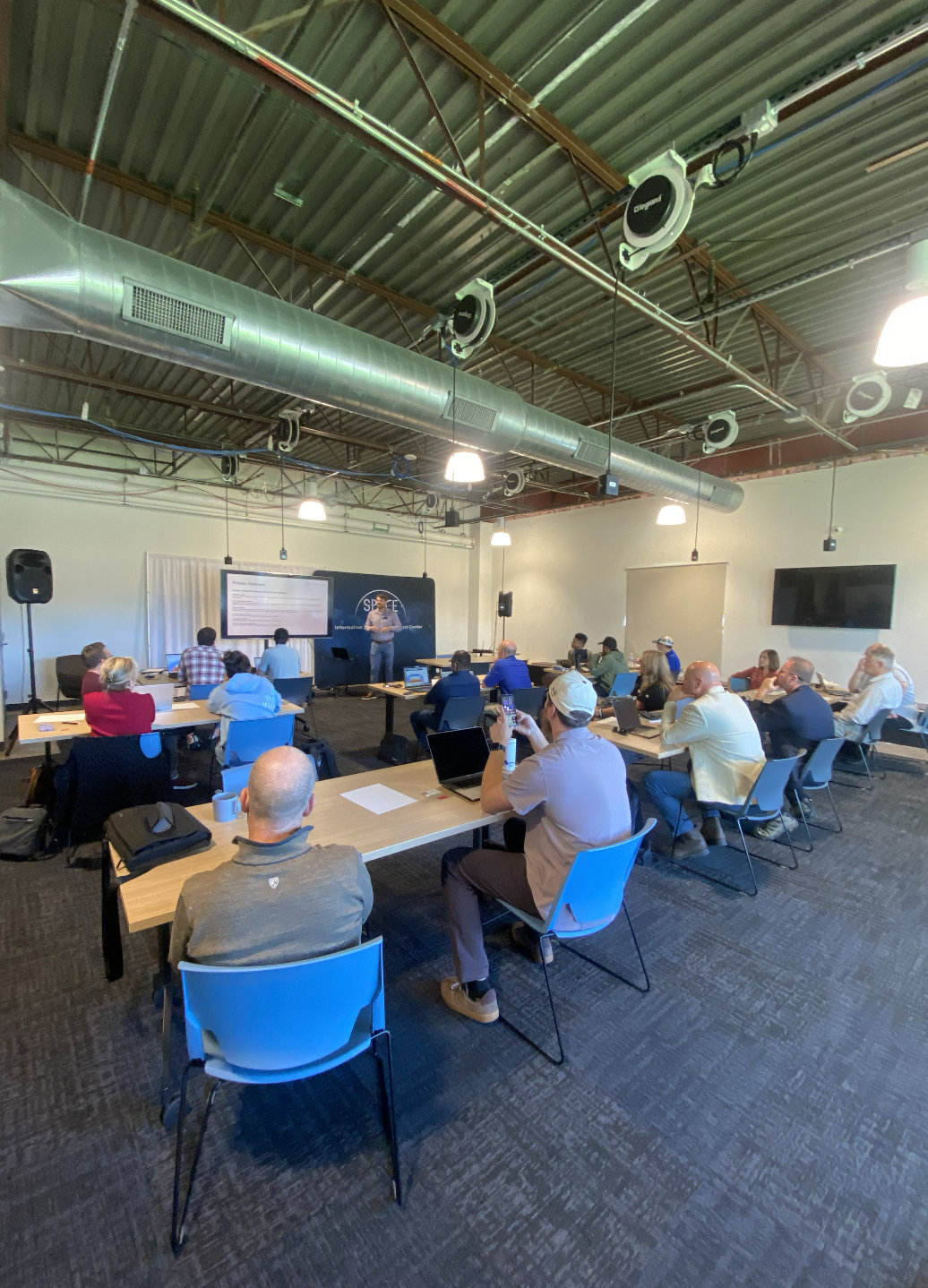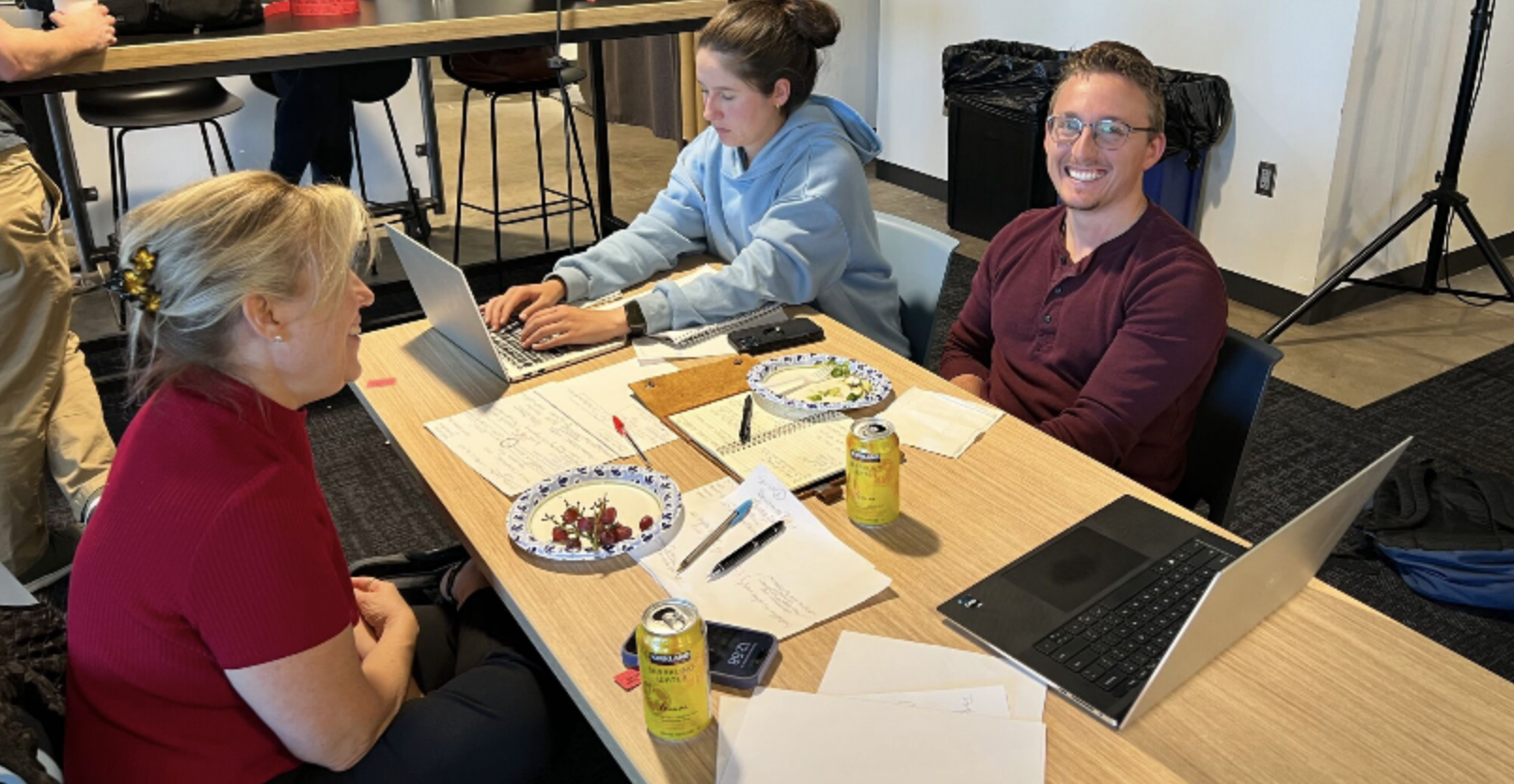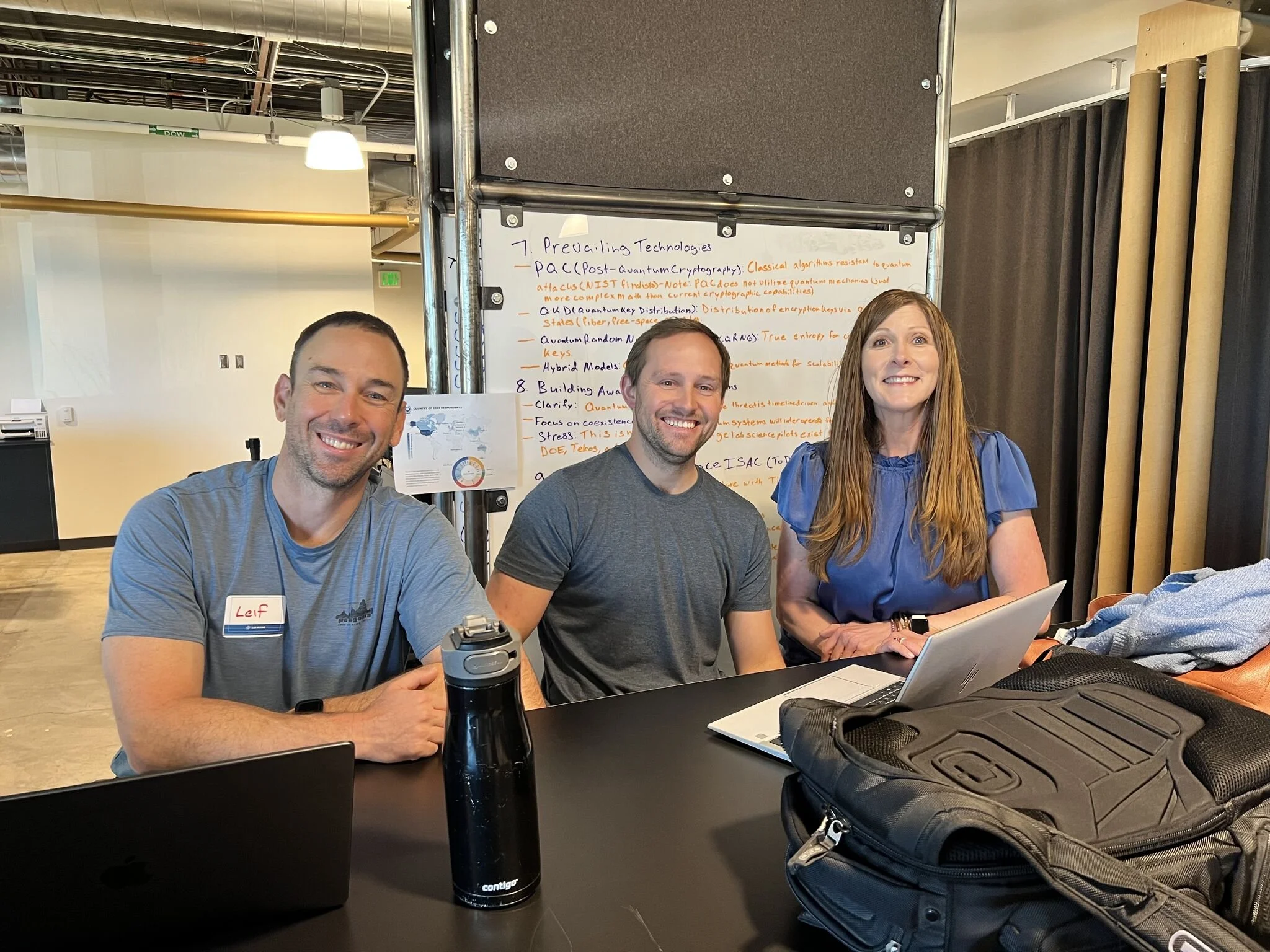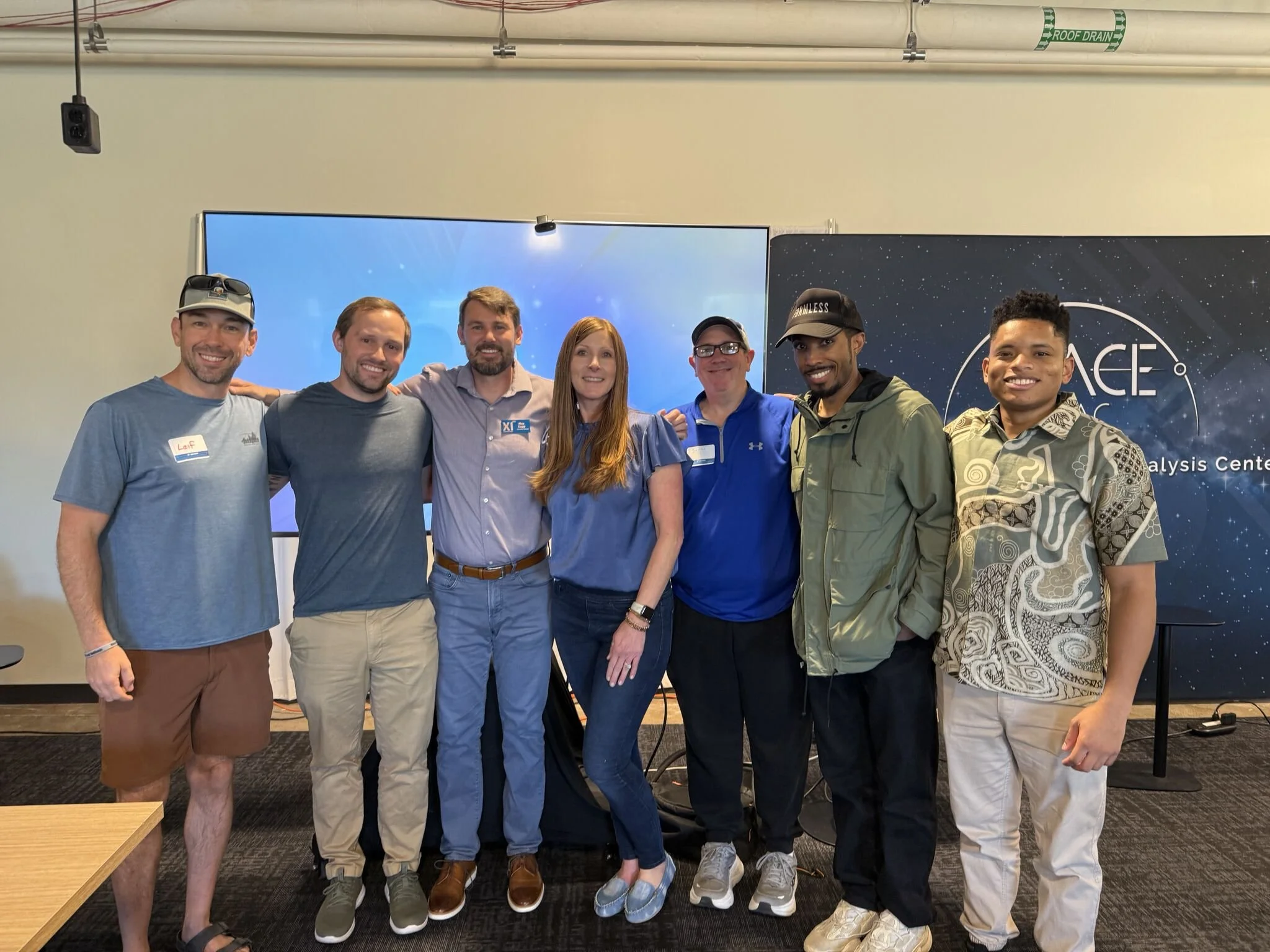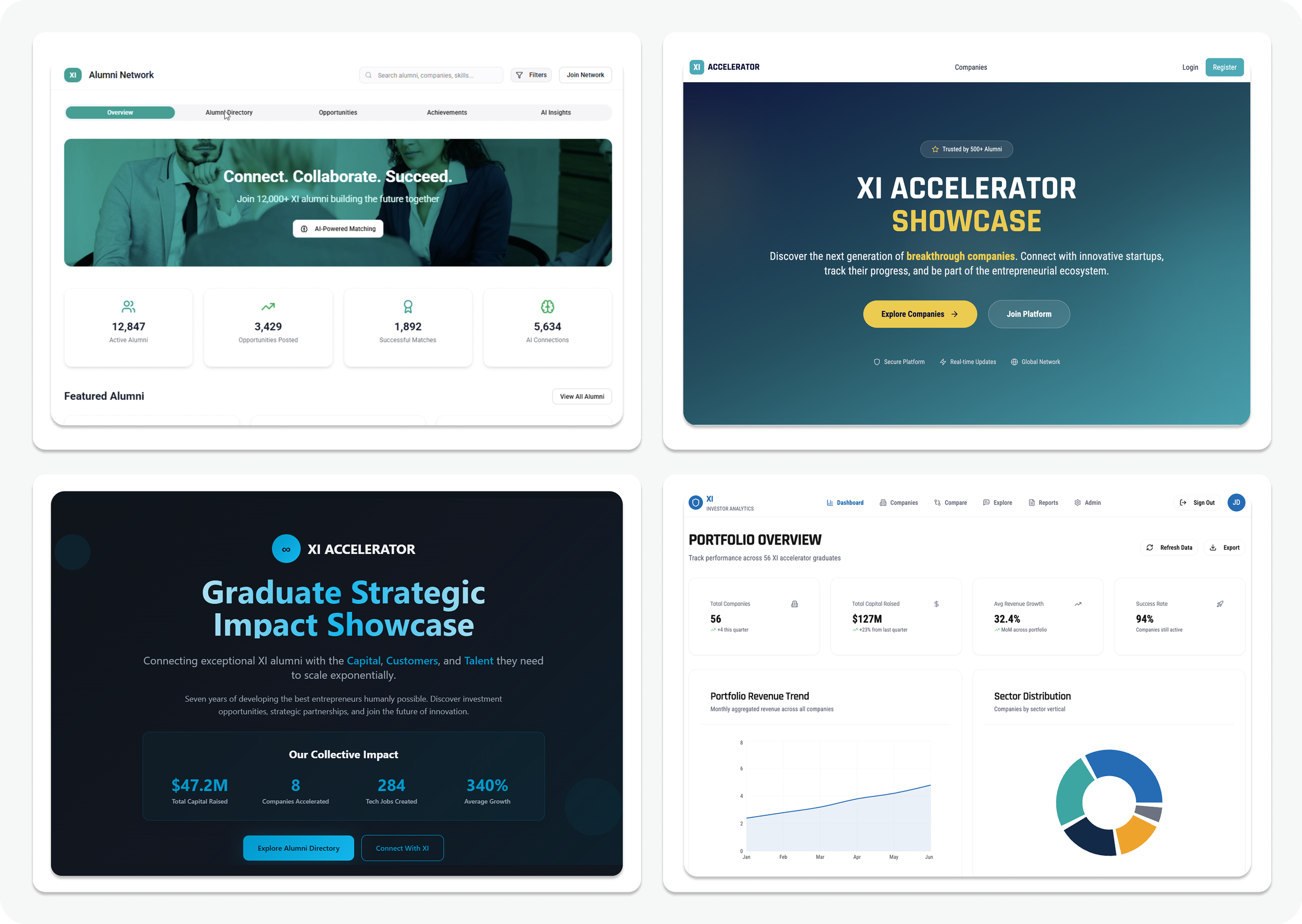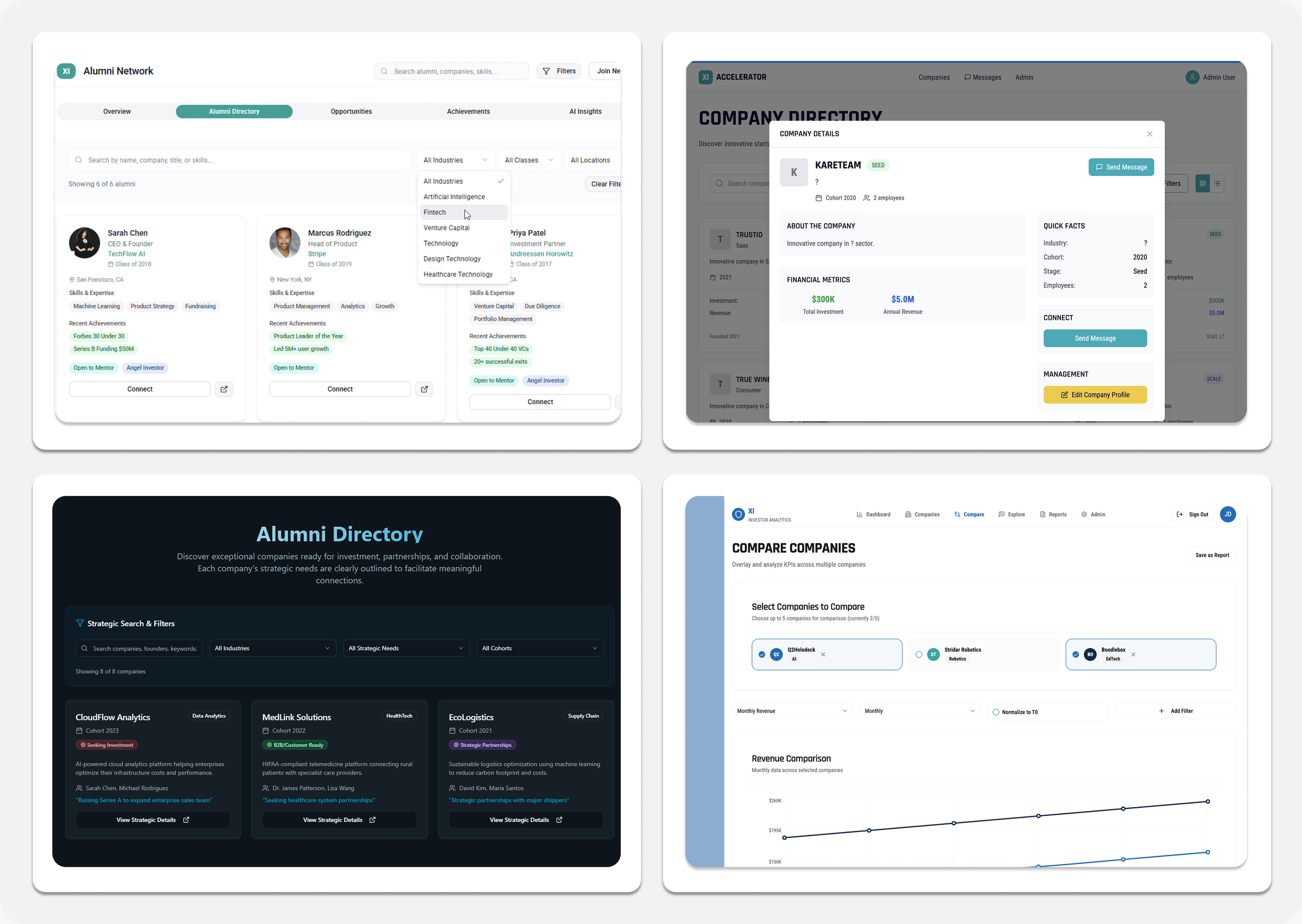From Problem to Prototype – COS Rising 2025
Overview
From Problem to Prototype was part of COS Rising 2025, a three-day celebration of innovation, entrepreneurship, and community in Colorado Springs. Designed for founders, startups, and tech-driven thinkers, the event offered interactive workshops, networking, and immersive experiences aimed at solving real-world challenges through rapid product development.
Client: XI Accelerator, Max Cupp, Director
Partners: Catalyst Campus for Technology and Innovation, El Pomar Institute for Innovation and Commercialization (EPIIC), Exponential Impact
Facilitators: Humanity Innovation Labs™ - Stephanie Battista Hubbard, Ullman Technologies - Leif Ullman, Home Day - Bill Rempelos
The facilitators led the sprint, guiding participants from problem definition to working prototype using a generative AI to vibe code. Participants left with new skills, actionable insights, and tangible prototypes.
Workshop Structure
The four-hour session followed a structured sprint format:
Understand & Ideate (30–45 min) – Clarify the problem and brainstorm solutions individually and as a team.
Select & Sketch (45 min) – Choose the best idea and map out user flows, key requirements, and interactions.
Prototype (60–90 min) – Build a basic, clickable mockup using vibe-code tools like Lovable.
Pitch & Demo (30–45 min) – Present a 2–3 minute demo to judges, highlighting functionality and value.
Rules & Constraints:
Keep prototypes lightweight and accessible.
Focus on solving one problem per team.
Encourage diverse ideas and rapid decision-making.
Use the provided dataset (7 years of XI accelerator alumni data) to guide solutions.
Present a working, interactive demonstration within 10 minutes.
Problem Statement
Challenge: Showcase Accelerator Graduates
Who is affected: Alumni seeking visibility, potential investors and partners, and Exponential Impact to demonstrate program impact.
Why it’s a problem: Without a centralized platform, alumni achievements are scattered, limiting networking, investment, and ecosystem growth opportunities.
Existing solutions: Internal spreadsheets and fragmented success stories.
Constraints: Keep data current and respect alumni privacy.
Minimum success: A user-friendly directory or platform highlighting all alumni achievements.
Objectives:
For alumni: Access to capital, customers, and talent.
For the community: Increase awareness of XI success stories, expand the tech ecosystem, and strengthen connections among startups and investors.
Execution
Approximately 6 teams participated, each tasked with:
Reviewing a semi-structured dataset including company info from the past 7 years (industry, founding year, funding, sales, jobs, grants, patents, product launches).
Defining the ideal user, mapping user flow, and identifying primary requirements.
Creating a clickable prototype using vibe coding.
Delivering a 10-minute demo illustrating the prototype, followed by a 2-minute pitch to judges using a scoring rubric.
Participants had to balance speed and creativity, while producing a solution that was both functional and visually clear.
Scoring & Evaluation
Teams were provided a problem statement, an alumni data set, XI Accelerator brand guidelines, and a how to get started demo with lovable. They were evaluated using a structured rubric to measure performance across five key categories, emphasizing both alignment with accelerator priorities and community impact. Judges scored teams on a 1–5 scale (1 = low/poor, 3 = average/medium, 5 = excellent/high), skipping 2 and 4 to highlight low, medium, and high performance. Extra credit points could be awarded for creative approaches or exceeding base requirements without negatively affecting the base score.
Evaluation Categories:
Problem-Solving – How effectively the solution addresses the user's needs.
Requirement: Must align with accelerator priorities (Access to Capital, Customers, Talent) and support ecosystem growth.
Extra Credit: Use of personas, storyboarding, multiple ideas, and relevant datasets.
Functionality – How well the prototype works and navigates.
Requirement: Clickable demo must function, even if full backend isn’t implemented.
Extra Credit: Integration of backend tools (e.g., Supabase) and real datasets.
Design & Usability – Ease of use and overall user experience.
Requirement: Interfaces should be intuitive and pleasant.
Extra Credit: Creative use of generative AI tools, voice-to-text, or multimedia integration.
Vibe & Aesthetic – Engagement, visual appeal, and memorability of the app.
Requirement: Reflect XI brand and provide a cohesive, appealing design.
Extra Credit: Innovative visual treatments, playful interactions, or unique creative elements.
Future Plans – Vision for growth and next steps.
Requirement: Teams should consider realistic improvements and potential expansion.
Extra Credit: Innovative features, scaling strategies, or ecosystem-aligned enhancements.
This rubric ensured consistent evaluation while encouraging creativity, usability, and alignment with accelerator and community objectives. It also gave teams the opportunity to experiment with vibe coding and generate forward-looking solutions within a tight, high-energy sprint environment.
Team Presentations & Outcomes
Six teams—Wise Guy, Alumni Hub, Accelerated Impact, CST, Exeligrad, and Superstars—rose to the challenge and delivered phenomenal clickable demos of their proposed solutions. For many, this was their first time vibe coding, yet within just four hours they adapted quickly, collaborated effectively, and produced working prototypes.
Each team brought a unique approach: some started by sketching users and scenarios, others dove directly into vibe coding to iterate rapidly, and a few honed in on capital access while others tackled the full spectrum—showcasing alumni companies, connecting startups with customers, and creating visibility for investors. Teams also experimented with different vibe coding tools, with several exploring advanced features like voice-to-text integration.
Judges evaluated solutions based on innovation, usability, visual clarity, and alignment with user needs. The result: six distinct, interactive prototypes that demonstrate practical pathways for an XI ecosystem portal—highlighting alumni companies and their KPIs while serving as a hub for investors, customers, and talent. These prototypes now form a strong foundation for user testing and iteration toward Version 2.
🎉 Congratulations to all of our teams—and a special shout-out to Alumni Hub: Luke Doster, Kristine Quine, and Nieves Fernandez Lopez!
Next Steps
The workshop not only produced valuable prototypes but also showcased the versatility of a design sprint approach to problem solving with vibe coding.
Whether your organization is looking to:
Explore emerging tools like vibe coding, generative ai, low-code - no-code
Solve a specific product challenge
Engage teams in a fast-paced innovation sprint
Humanity Innovation Labs™’ can curate and facilitate a workshop tailored to your needs.


